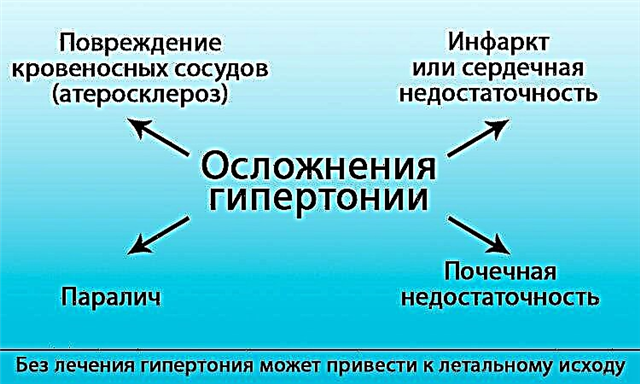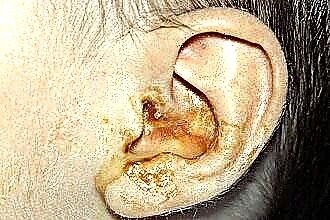How is pharyngitis in children treated? Dr. Komarovsky E.O., a well-known and respected person among parents, says that there is no need to panic if a child has pharyngitis. But this does not mean that the disease can be allowed to take its course. The main thing is to provide conditions conducive to the recovery of the child, and not to interfere with his body to fight the infection.
 Treatment "according to Komarovsky" is very popular. This is not surprising, because Dr. Komarovsky not only tells in detail how to treat a child, but also explains how such treatment affects the body. Yevgeny Olegovich himself has repeatedly emphasized that he is promoting among parents a healthy attitude to children's illnesses, in particular, to colds.
Treatment "according to Komarovsky" is very popular. This is not surprising, because Dr. Komarovsky not only tells in detail how to treat a child, but also explains how such treatment affects the body. Yevgeny Olegovich himself has repeatedly emphasized that he is promoting among parents a healthy attitude to children's illnesses, in particular, to colds.
Let's talk about exactly how Dr. Komarovsky advises to treat pharyngitis in children.
Is it pharyngitis?
Parents do not always have a clear idea of what pharyngitis is. This is the first thing a famous pediatrician pays attention to. But the ability to distinguish pharyngitis from other throat diseases can help you choose the most appropriate treatment regimen, monitor the healing process and not miss the moment when antibiotics may be required. The fact is that with pharyngitis, antibiotics are extremely rare, since this disease in most cases is of a viral nature. Sore throat is usually caused by a streptococcal infection, which can only be destroyed by antibiotic therapy. Thus, the treatment of these diseases is fundamentally different.
How to understand that a child has acute viral pharyngitis?
Pharyngitis is a disease based on inflammation of the mucous membrane and lymphoid tissue of the pharynx.
With pharyngitis, it is the pharynx that is affected - the organ that connects the oral cavity with the underlying respiratory tract - the larynx, trachea, etc. Through the open mouth, only a small portion of the pharynx can be seen, behind the tonsils and soft palate. The symptoms of her inflammation are as follows:
- redness of the throat;
- swelling of the mucous membrane of the pharynx and surrounding tissues;
- small ulcers, erosion and bruising may be visible on the mucous membrane;
- sore throat, dryness, soreness;
- general malaise - weakness, drowsiness, apathy.
It is important to note that with pharyngitis, the patient's tonsils remain in a normal state. If the tonsils are enlarged and covered with a mucopurulent coating, it is obvious that the child has acute tonsillitis, i.e. angina. In some cases, tonsillopharyngitis is also diagnosed - a mixed form of the disease.
Both viral and bacterial pharyngitis in children is accompanied by a significant increase in body temperature, especially in the first days of the illness.
About viral and bacterial causes
In most cases, when a child complains of a sore throat, and the parents notice that his throat is very red, it is pharyngitis, which is also viral. ARVI viruses (acute respiratory viral infections) very often cause outbreaks of colds in children's groups - a kindergarten group, a school class, etc. Komarovsky believes that this is normal, noting that a child with a normal immune system can get colds, including viral pharyngitis, up to 10 times a year. This literally means that a child can have signs of a mild cold almost every month. Faced with a variety of viruses, the human immune system accumulates a kind of "database" of all kinds of pathogens. In the future, the introduction of such a virus will no longer cause such clear signs. That is why, in adults, colds usually run easily, without fever and complications.
Pharyngitis of bacterial origin is rare among children.  In most cases, it is a complication of the viral form. Inflammation is caused by bacteria of opportunistic microflora present on the mucous membranes of almost every person. The accession of a secondary infection usually occurs on the 3-4th day of viral pharyngitis. If this happened, the child's condition deteriorates sharply - the throat begins to hurt more, a purulent plaque forms in the pharynx, the body temperature rises to 38.5C and above.
In most cases, it is a complication of the viral form. Inflammation is caused by bacteria of opportunistic microflora present on the mucous membranes of almost every person. The accession of a secondary infection usually occurs on the 3-4th day of viral pharyngitis. If this happened, the child's condition deteriorates sharply - the throat begins to hurt more, a purulent plaque forms in the pharynx, the body temperature rises to 38.5C and above.
Dr. Komarovsky notes that the development of secondary bacterial pharyngitis is facilitated by improper treatment, in particular, insufficient drinking and dry air in the patient's room.
Drug treatment
Dr. Komarovsky believes that in case of viral pharyngitis, treatment should be aimed, first of all, at preventing complications, namely, the addition of a bacterial infection. To do this, it is necessary to make the child's throat an unfavorable environment for bacteria. Various antiseptics have just such an effect, inhibiting the multiplication of bacteria, fungi and viruses that inhabit the upper respiratory tract.
Evgeny Olegovich considers rinsing to be one of the most effective and simple methods of treatment.
As a rinse solution, the pediatrician recommends infusions of medicinal herbs - sage, chamomile, St. John's wort.
An easier option is salt water. Just dissolve half a teaspoon of salt in a glass of warm water and the gargle solution is ready. It cleans the mucous membrane well from plaque and moisturizes it. The procedure can be repeated every 2 hours. Unfortunately, this method of treatment is not suitable for everyone - very young children still do not know how to gargle.

Komarovsky often mentions the following effective and affordable drugs for the treatment of pharyngitis:
- Faringosept lozenges. They have a pleasant chocolate flavor and do a good job of relieving pain and soreness. But their main advantage is a pronounced antiseptic effect.
- The drug Bronchikum Komarovsky recommends both cough and sore throat. These lozenges contain thyme extract, which has anti-inflammatory and thinning properties.
- Lozenges Dr. Mom have a similar effect - relieve swelling, relieve pain, prevent the accumulation of mucus. The peculiarity of the drug is the presence of all kinds of flavors: berries, orange, pineapple, etc. Regardless of taste, all Dr. Mom lozenges contain extracts of licorice, ginger, emblica and menthol.
- The drug Falimint is an antitussive agent with a slight analgesic effect. The pediatrician recommends it both for pharyngitis and for other acute respiratory diseases of the upper respiratory tract.
- Among antiseptic sprays for the throat, Komarovsky distinguishes Orasept. It has antimicrobial and antifungal properties. In addition, Orasept reduces pain. The spray has a pleasant cherry flavor that kids love. It is suitable for babies from 2 years old.
The above drugs can be used for both viral and bacterial pharyngitis. However, it should be remembered that a bacterial infection cannot be cured with antiseptics alone - antibiotics are needed.
Komarovsky strongly discourages parents from choosing antibiotics for treating a child on their own - this should be done by the attending physician, since antibiotics are potent drugs and have many contraindications.
How to speed up your recovery?
Komarovsky pays great attention to ensuring conditions favorable for the child's recovery. First, give your child some rest - no need to send him to school, or try to make up for missed lessons at home. The patient should sleep a lot. If desired, he can read books, watch TV, draw. The main thing is that the entertainment is calm.
The child's room should have clean air of a comfortable temperature and humidity.Experts recommend keeping the temperature at 20 ° C and the humidity around 50-60%.  To achieve such conditions, ventilate the room, humidify the air with wet towels, and regularly wet cleaning. Better let the child dress warmly than breathe too warm dry air.
To achieve such conditions, ventilate the room, humidify the air with wet towels, and regularly wet cleaning. Better let the child dress warmly than breathe too warm dry air.
Dr. Komarovsky believes that dry air irritates the mucous membranes, increases perspiration and slows down recovery.
You should also take care of the nutrition of the sick child. First, he must drink a lot. Preference should be given to such drinks as mineral water, compote, fruit drink, herbal tea. As for food, it should be warm and non-irritating (spices and herbs are best avoided).
When is the doctor's help needed?
Do not think that Dr. Komarovsky is promoting self-medication among parents. On the contrary, the pediatrician recommends consulting a doctor at the first symptoms of pharyngitis. Only a full-time examination gives a complete picture of the child's condition and the characteristics of the course of the disease.
In some situations, doctor's help should be immediate. Komarovsky says that an ambulance for a child with a sore throat must be called if:
- the child's body temperature exceeds 38 ° C;
- breathing is accompanied by wheezing, whistling;
- the child complains of ear pain;
- the pain when swallowing is very severe;
- there was nausea, vomiting;
- the tonsils are enlarged and covered with pus;
- a rash appears on the skin or mucous membranes;
- the child loses consciousness.
Pharyngitis can be easily confused with more serious diseases such as tonsillitis, diphtheria, mononucleosis, so parents should always be on the lookout.



